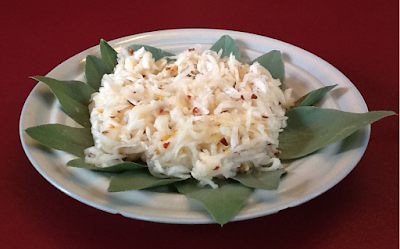Favas are a vetch, not an actual bean. Allergies to beans, peas or lentils do not necessarily mean an allergy to favas. My grandson, who was violently allergic to every kind of bean, pea and lentil, ate them with impunity. Note that there is a rare genetic enzyme deficiency (not a true allergy) that gives some people, especially of Middle Eastern or African descent, gastrointestinal distress when they eat favas.
This recipe is a classic in Turkish cuisine, which has a whole category of vegetables cooked with olive oil and lemon juice and served cold. (Another is leeks with olive oil, zeytinyağlı pirasa). It required no doctoring on my part: thus, it does not suffer from missing or substituted ingredients.
3-4 Tb. olive oil (See Oil in the Glossary)
1 pound favas (young pods, not more than 6 or 7 inches long and sliced into a few chunks, and/or seeds from larger pods. These should also be
relatively young, not more than an inch or so across. If you do use larger
pods, you need to pull the "strings" off from each side of the pod.)
1 small onion, chopped
(optional) 2 cloves of garlic, minced
salt (See Salt in the Glossary)
fresh squeezed juice from 1 lemon (See Juice in the Glossary)
1/2 tsp. sugar (See Sugar in the Glossary)
sprinkle of black pepper (See Spices in the Glossary)
2 Tb. washed, chopped fresh baby dill (See Produce in the Glossary)
Heat the olive oil in a pan. Add the favas and onion. Sprinkle with salt and saute on medium heat, stirring frequently, until the favas are somewhat tenderized and the onion is translucent. Do not brown. Add the garlic and cook for one more minute. stirring constantly. Add the lemon juice, sugar, black pepper and baby dill and a cup and a half of water. Bring to a boil and simmer, covered, until the favas are nicely tenderized but not mushy. Most of the water should boil off, but do not allow the favas to get dry. How long this takes depends on the size of the favas, how thoroughly they were sauteed, etc. The ones in the picture took about half an hour. Adjust salt to taste. Chill.




